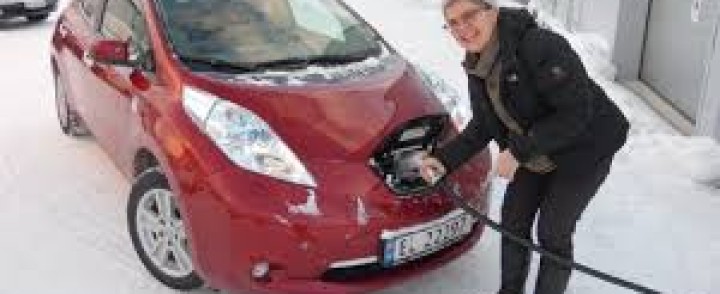How Norway became the leading EV market
The country of Norway only has 2.5 million cars, yet they own the largest share of electric vehicles in the world. Not only were they early movers, they were also early to market. Their incentive programs have sped up the introduction of electric vehicles to the population, but the buzz has been going on since the 1980’s.
A brief history
In 1989, Norway started its promotion of electric vehicles using the famous pop group A-ha. Fast forward five years and the Norwegian EV producer PIVCO (who later became Think) successfully operated 12 EVs during the Lillehammer Winter Olympics. By this time, Norwegians were starting to catch onto the concept of cars powered by electricity.
Subsequently, the government began to offer incentives and programs aimed at increasing the sale of EVs; while simultaneously working on reducing emissions. In the mid-nineties, they cut the annual registration tax and exempted all EVs from road tolls. The two-thousands saw free access to bus lanes and road-ferries.
In 2008, the city of Oslo launched the first municipal EV charging infrastructure program and by 2012, there were more than 10,000 EVs on the road, accounting for 3% of all car sales. The first plug-in hybrid vehicles (PEVs) were introduced in 2013 and only 691 cars were sold. By 2017, there were 67,171 PEVs sold and 141,951 battery operated electric vehicles (BEVs). That’s why Norway is currently the leader of the pack.
The current market
As of 2017, electric vehicles have a 39.2 % market share in Norway. That figure breaks down to 20.8% for battery electric vehicles (BEVs) and 18.4 % for plug-in hybrids (PHEVs). The country’s competitive advantage is at least 5-10 years ahead of the rest of the world.
The Norwegian market is filled with early adopters that report unique user experiences and have little range anxiety. By the year 2020, the country aims to house over 250,000 electric vehicles. Since the beginning of this year, 20% of new registrations in the country of Norway are for electric vehicles. So they’re on the right track to meeting goals.
There is a good reason why the country of Norway owns almost a quarter of the world’s electric vehicles. They offer residents an incredible amount of tax breaks and incentives to purchase. Electric vehicle owners see benefits like:
- Exemption from 25% VAT on purchase.
- No import or purchase taxes.
- Toll roads and ferry fees waived.
- Low annual road tax.
- Free municipal parking.
- 50% reduced company car tax.
- Access to bus and HOV lanes.
- Exemption from 25% VAT on leasing.
As the market develops, the incentive program will be revised and adjusted accordingly. Plans to revisit these subsidies start later this year. In addition to supportive policy, Norway also has a loyal culture surrounding EVs. The Norwegian Electric Vehicle Association is an organization promoting renewable energy transport and currently has over 35,000 members.
The overall message the Norwegian government wants to send is that low and zero-emissions vehicles should always be more economically beneficial to residents, than diesel powered ones. Despite being the largest oil producer in western Europe, Norway plans to completely ban the sale of petrol vehicles by the year 2025.
It should also be noted that the sale of diesel cars fell from 31% to 23% in 2017 and parts of Norway have now started charging higher road tolls for non-electric vehicles. It is inevitable that it will ultimately become very costly to own a diesel-powered vehicle.
With a ban less than 10 years away, it seems certain Norway is determined to edge out petrol. Currently, the prices are already high and are projected to keep skyrocketing. The carbon price on petrol is 73 NZD per ton CO2. To achieve the substantial reductions of Norway’s goal, prices will have to be increased to at least NZD 520-690 per ton, or the fuel price raised by 50%.
The charging infrastructure
By 2015, it was apparent that Norway might not have been entirely prepared for the exponential growth of EVs. For an average 72,000 EVs on the road, there were less than 10,000 charging points. All of that is now changing.
The European Clean Power for Transport directive has promised one public charging point for every 10 electric cars by the year 2020. If the Norwegian EV population meets the intended goal of 250,000 by the year 2020, there needs to be around 25,000 public charging points available. In 2015, there were only around 1,350. So, it’s still a work in progress.
The good news is that the Norwegian government has launched a program to finance the establishment of at least two multi-standard fast charging stations every 50 km on all main roads in Norway. Additionally, a new network of 180 EV charging stations is currently being constructed. It runs all the way from Italy to Norway and is funded by the European Union (EU).
Continue reading:
https://www.fleetcarma.com/norway-became-leading-ev-market/?utm_campaign=Newsletter&utm_source=hs_email&utm_medium=email&utm_content=60846578&_hsenc=p2ANqtz–n1XXSia7fUmeF6DjYAq0kvXV0J3gh6I6cU7rsiKNPlHo_Yt6VVD0B_wxIv_kMPzhSvFgg2CnB1KXp93_Mp7HaFwDFQw&_hsmi=60847057
• How Norway became the leading EV market



